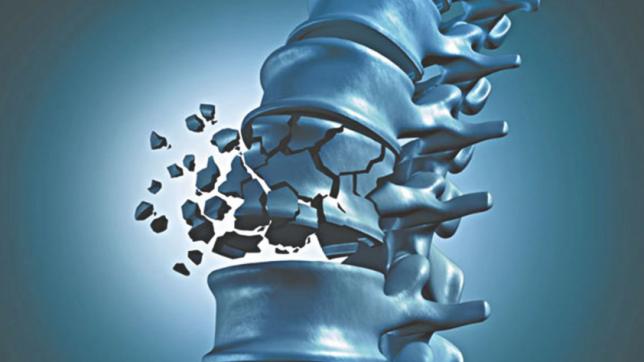When was the last time you thought about osteoporosis? If you’re like most younger women, it probably doesn’t cross your mind. But as you get older, osteoporosis is going to become a bigger and bigger threat—and there are steps you can take now to greatly reduce your risk for this condition.
What Is Osteoporosis?
The term “osteoporosis” is assigned to this condition because it literally translates to “porous bone,” which is an apt description for the symptoms of the disease. Human bones may seem dense and permanent, but they’re composed of living tissue and are constantly changing over time. As we grow up, our bones become stronger and stronger, but they reach a peak density, or bone mass, in our early 20s.
As we age past this peak density, our bone cells begin to deteriorate. Simultaneously, new bone cells are deposited to replace them. This is a process known as remodeling; essentially, our bones are dissolved and rebuilt on a gradual basis.
When you have osteoporosis, you’ll lose bone mass faster than you can replace it. The remodeling process leaves you with porous bones, making them weak and brittle. People with osteoporosis are therefore much more prone to bone fractures. As they get older, they may also experience crumpling, which can lead to loss of height, a hunched posture, and other physical effects.
One of the most frightening elements of osteoporosis is how common it is, especially among women. It’s estimated that more than 200 million people are suffering from osteoporosis currently, and 1 in 3 women over the age of 50 will experience at least one osteoporotic fracture in their lifetime. Men can suffer from osteoporosis as well, but women are at much higher risk.
Osteoporosis Treatment
The good news is that osteoporosis is now a fairly treatable disease. There are several medications that can improve your bone density, and reduce the symptoms of osteoporosis. In combination with nutritional supplements like calcium and magnesium, as well as lifestyle factors, these medications can reduce your risk of a fracture by between 30 and 70 percent.
Even though osteoporosis can be treated, it can’t be cured. With this bone disease, you’ll always be at higher risk of a fracture, and in the later stages of your life, even a simple fracture can have a devastating effect on your body. Your best option is to prevent osteoporosis before it has a chance to manifest.
Preventing Osteoporosis
Most women can dramatically reduce their risk of developing osteoporosis with a handful of basic lifestyle changes. If you instate these lifestyle changes in your early 20s, when your bone density is peaking, you’ll be in even better shape:
- Get plenty of calcium. Women under 50 should be getting 1,000 mg of calcium every day, along with plenty of vitamin D to ensure the proper absorption of the mineral. Few women get this amount of calcium in their daily diet, so it’s important to take a nutritional supplement to account for the remainder. You could also increase the number of calcium-rich products in your daily diet, such as milk, cheese, other dairy products, eggs, and leafy green vegetables.
- Use resistance training. One of the best ways to maintain and improve your bone mass is to lift weights and practice resistance training. Any exercise is good for you, but for healthier bones, high-intensity weight lifting is ideal.
- Maintain a healthy body weight. If your weight is too low, your bones won’t be able to generate or maintain as much mass as they need. If your weight is too high, you’ll be at much higher risk of bone fractures. Accordingly, you’ll want to maintain a healthy, average weight throughout your life. Fortunately, if you’re watching what you eat and you exercise regularly, this shouldn’t be an issue.
- Avoid heavy smoking and drinking. Drinking alcohol excessively and smoking are both linked to an increased risk of osteoporosis. Avoid these bad habits as much as possible, and avoid secondhand smoke.
- Get treatment for any eating disorder you have. Eating disorders, especially those that involve purging or undereating, can increase your risk of osteoporosis. If you suffer from anorexia, bulimia nervosa, or any other eating disorder, be sure to get treatment immediately. It’s also a good idea to avoid any weight loss diet that involves significant weight fluctuations.
These factors can reduce your risk profile, but it’s important to realize that there are also risk factors that are harder to avoid or mitigate. For example, you may be at higher risk for the disease due to genetic factors, due to your ethnicity, or due to hormonal changes in your body. Make sure you talk to your doctor about your specific risks.

